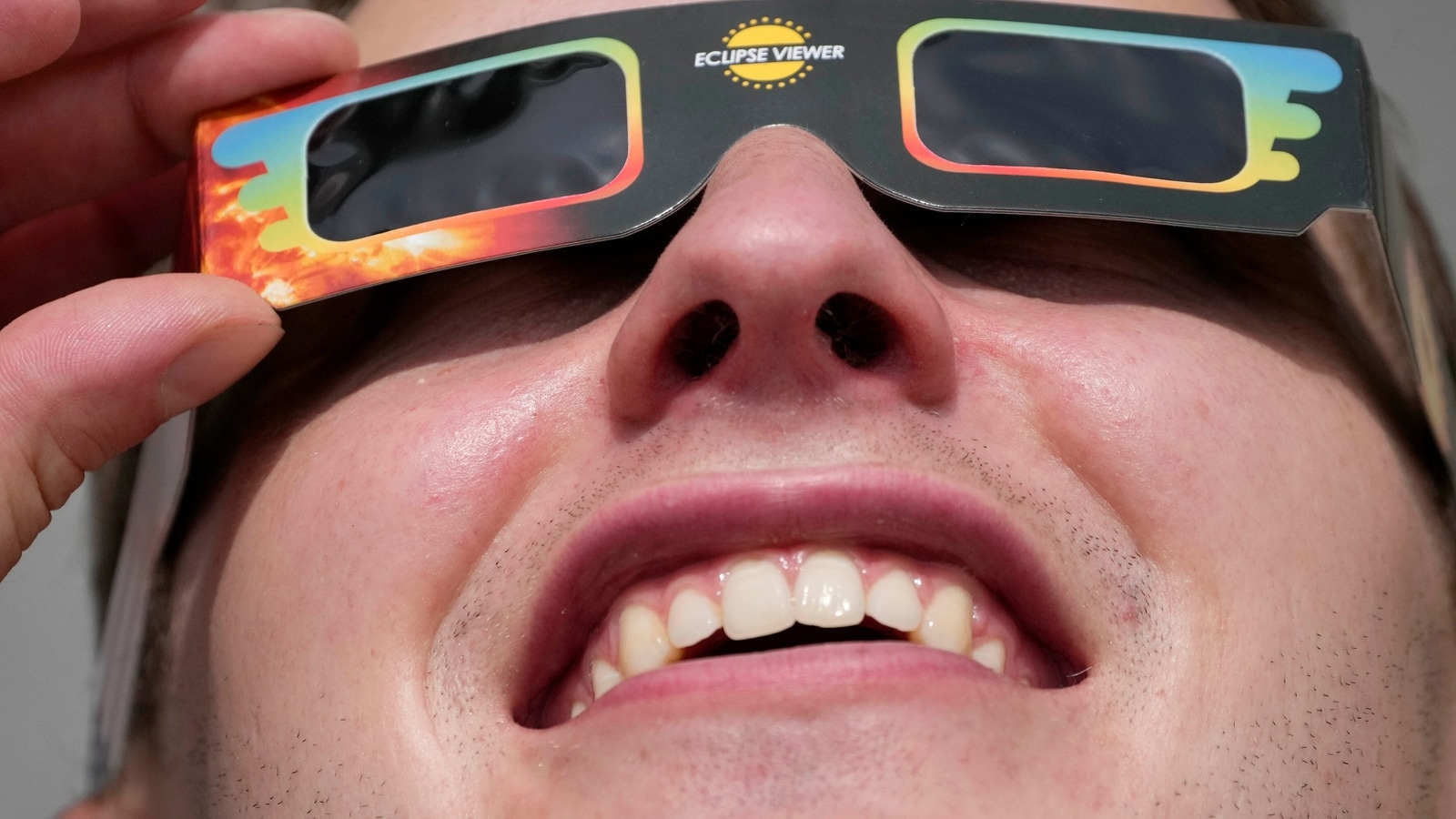With the total solar eclipse on April 8, it’s important to ensure that your eclipse glasses are safe and authentic. There are reports of phoney glasses flooding the US market, ahead of this mega astronomical event. While it may benefit the sellers it can take a toll on your eyesight. Here’s how you can distinguish between real and fake eclipse glasses to safeguard your vision and enjoy the celestial phenomenon at the same time.

Also read: Isla Fisher and Sacha Baron Cohen had explosive parenting showdown amid career demands
Fake Eclipse glasses flood the US market
On March 22, The American Astronomical Society found evidence and reports of “counterfeit and fake” flooding the market ahead of the big astronomical event. The organisation warned the public in their statement asserting the damages it can make on the eyesight.
“With millions of North Americans only now becoming aware that a solar eclipse is imminent and seeking to get their hands on eye protection, it is critical that everyone understand how to spot unsafe products,” AAS released the statement addressing the problem.
How to tell if your Eclipse glasses are real
AAS project manager Rick Fienberg explains how the public can verify the safety of their glasses during the eclipse. Here are three simple steps to test.
Also read: Why April’s total solar eclipse in 2024 has everyone talking: Next won’t happen for 20 years
Indoor Test: Before the eclipse, use your glasses indoors. “If they are real, you shouldn’t be able to see anything through them except for very faint, bright lights.”
Outdoor Test: Test your eclipse glasses outside and look around. Again, you shouldn’t see anything except for the “faint glare of the sun reflecting off surfaces.”
Sun Glance Test: For the third test, Gently glance at the sun for less than a second while wearing your glasses. You should only see a “sharp-edged, round disk that appears comfortably bright.” Depending on the filter in your glasses, the colour of the sun can range from white to bluish-white, yellow or orange. He adds.
While these tests are sufficient to confirm the authenticity of the glasses, users who are still unsure should either get their glasses tested in labs or use them “carefully” and look through them for no more than 2 to 3 seconds per 5 minutes. As per the organisation, clone glasses can even have the same names as known brands and pretend to meet ISO standard 12312-2 for sun observation filters. Testing the glasses in a lab is the only way to confirm their quality.
Using fake eclipse glasses can cause permanent blindness
According to the American Astronomical Society, genuine eclipse glasses protect the eyes by blocking most of the sun’s ultraviolet (UV) light, visible light, and infrared light (IR). Fake eclipse glasses, on the other hand, won’t fulfil all the criteria. “Filters that provide safe, comfortable views of the sun generally transmit between 1 part in 100,000 (0.001%) and 1 part in 2,000,000 (0.00005%) of its visible light,” Fienberg explains.
This level of protection is crucial or it can cause serious eye injuries from temporary vision loss to permanent blindness. “Solar filters are at least 1,000 times darker than even the darkest regular sunglasses.”
